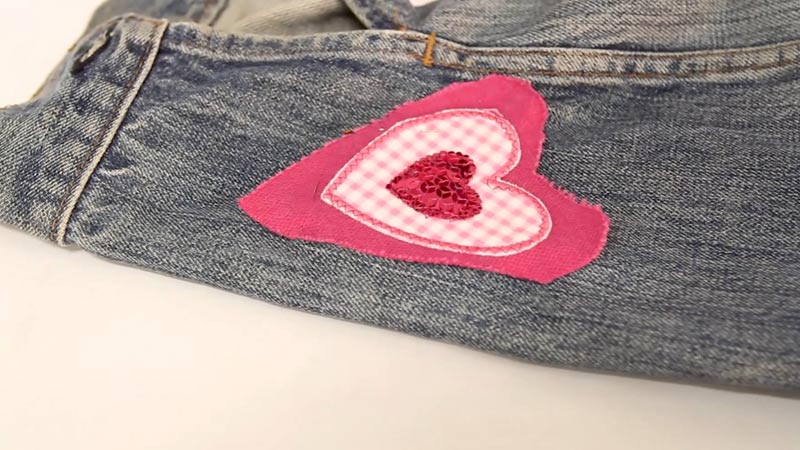Care labels are an important part of clothing and other textiles, as they provide important information about how to care for the item properly.
Care labels may include instructions on how to wash, dry, and iron the item, as well as any special handling instructions that may be necessary. One common care instruction that you may see on care labels is “Do not iron if decorated.
” This instruction is meant to protect any decorations or embellishments on the item from being damaged or distorted during the ironing process. In this article, we will explore what “do not iron if decorated” means and how to care for decorated items properly.

What Does “Do Not Iron if Decorated” Mean?
Do not iron decoration meaning that you should not iron the item if it has any kind of decoration or embellishment on it. These decorations or embellishments could include things like embroidery, sequins, beads, appliqué, patches, fringe, or lace.
Ironing can cause damage to these decorations or embellishments, or it can cause them to become distorted or lose their shape.
For example, if you iron a shirt with sequins on it, the heat from the iron may cause the sequins to melt or become deformed. Similarly, if you iron a shirt with embroidery on it, the heat from the iron may cause the embroidery to become discolored or distorted.
It’s important to follow the care instructions on the label to ensure that you don’t accidentally damage the item while trying to care for it.
Examples of Decorations and Embellishments That May Be Affected by Ironing
There are many different types of decorations and embellishments that may be affected by ironing. Some examples include:
- Embroidery: Embroidery is a decorative technique that involves decorating fabric with needle and thread. Ironing can cause embroidery to become distorted or discolored, so it’s important to follow the care instructions on the label.
- Sequins: Sequins are small, shiny discs that are often used to add sparkle and shine to clothing and other textiles. Ironing can cause sequins to melt or become deformed, so it’s important to be careful when ironing items with sequins on them.
- Beads: Beads are small, round objects that are often used to add decoration to clothing and other textiles. Ironing can cause beads to melt or become deformed, so it’s important to be careful when ironing items with beads on them.
- Appliqué: Appliqué is a decorative technique that involves attaching a piece of fabric to another piece of fabric using fabric glue or stitches. Ironing can cause the appliqué to become distorted or lose its shape, so it’s important to follow the care instructions on the label.
- Patches: Patches are decorative pieces of fabric that are often used to repair or decorate clothing and other textiles. Ironing can cause patches to become distorted or lose their adhesive, so it’s important to be careful when ironing items with patches on them.
- Fringe: A Fringe is a decorative border of loose threads or strips of fabric that is often used to trim clothing and other textiles. Ironing can cause fringe to become distorted or lose its shape, so it’s important to be careful when ironing items with fringe on them.
- Lace: Lace is a delicate, decorative fabric that is often used to trim clothing and other textiles. Ironing can cause lace to become distorted or lose its shape, so it’s important to be careful when ironing items with lace on them.
How to Care For Decorated Items?

If you have an item that is decorated or has embellishments on it, there are several steps you can take to ensure that you care for it properly:
Sew on patches or other decorations
If you want to attach patches or other decorations to your clothing or other textiles, sewing them on is generally the most secure and durable method. You can use a sewing machine or hand-sew the patches or decorations onto the item. This will give you a long-lasting attachment that is less likely to become damaged or fall off.
Use a no-iron pressure-sensitive adhesive
If you don’t feel comfortable sewing on patches or other decorations, you can try using a no-iron pressure-sensitive adhesive. These adhesives are designed to bond patches or decorations to fabric without the need for ironing. Keep in mind that these adhesives may not be as long-lasting as sewing, so you may need to reapply them more frequently.
Follow the care instructions on the label
It’s always important to follow the care instructions on the label to ensure that you don’t accidentally damage the item while trying to care for it. If the label says “do not iron if decorated,” be sure to heed this instruction to avoid damaging any decorations or embellishments on the item.
By following these steps, you can ensure that you care for your decorated items properly and keep them looking their best for as long as possible.
Table: Care Methods for Decorated Items
| Decoration or Embellishment | Safe to Iron? | Best Care Method |
|---|---|---|
| Embroidery | No | Hand-wash or machine-wash on a gentle cycle lay flat to dry, or tumble dry on low heat |
| Sequins | No | Hand-wash or machine-wash on a gentle cycle lay flat to dry, or tumble dry on low heat |
| Beads | No | Hand-wash or machine-wash on a gentle cycle lay flat to dry, or tumble dry on low heat |
| Appliqué | No | Hand-wash or machine-wash on a gentle cycle lay flat to dry, or tumble dry on low heat |
| Patches | No | Sew onto the item for a more secure and durable attachment |
| Fringe | No | Hand-wash or machine-wash on a gentle cycle lay flat to dry, or tumble dry on low heat |
| Lace | No | Hand-wash or machine-wash on a gentle cycle lay flat to dry, or tumble dry on low heat |
FAQs
While using a low heat setting may help to reduce the risk of damaging the decorations or embellishments on an item, it’s still best to follow the care instructions on the label. If the label says “do not iron if decorated,” it’s best to avoid ironing the item altogether to ensure that you don’t accidentally damage it.
Placing a cloth over decorated items before ironing may help to protect the decorations or embellishments from the direct heat of the iron. However, it’s still important to follow the care instructions on the label and be cautious when ironing decorated items. The heat from the iron can still cause damage or distortion to the decorations or embellishments, even if a cloth is used.
Using a steamer instead of an iron may be a safer option for decorated items, as steamers typically use lower temperatures and less direct heat than irons. However, it’s still important to be cautious and follow the care instructions on the label to ensure that you don’t accidentally damage the item.
If you’re only trying to smooth out wrinkles in a decorated item, it’s generally best to avoid ironing it altogether. There are other methods that you can use to remove wrinkles from clothing, such as hanging the item in the bathroom while you shower or using a hand-held steamer.
These methods are generally safer for decorated items and can help to reduce the risk of damaging the decorations or embellishments.
If the care label doesn’t specifically say “do not iron if decorated,” it’s generally safe to assume that you can iron the item. However, it’s still important to be cautious and use a low heat setting to reduce the risk of damaging the decorations or embellishments on the item. If you’re unsure about whether or not it’s safe to iron a decorated item, it’s always best to err on the side of caution and avoid ironing it altogether.
Conclusion
It’s important to follow care instructions on clothing and other textiles to ensure that you care for your items properly and keep them looking their best for as long as possible.
One common care instruction that you may see is “do not iron if decorated,” which refers to any kind of decoration or embellishment on the item. Ironing can cause damage to these decorations or embellishments, or it can cause them to become distorted or lose their shape.
To care for decorated items properly, you can sew on patches or other decorations for a more secure and durable attachment, use a no-iron pressure-sensitive adhesive, or follow the care instructions on the label.
Also, do not iron on print or other decorated items as well. Be sure to consider the decorations or embellishments on your items when determining the best care method to use.
Leave a Reply